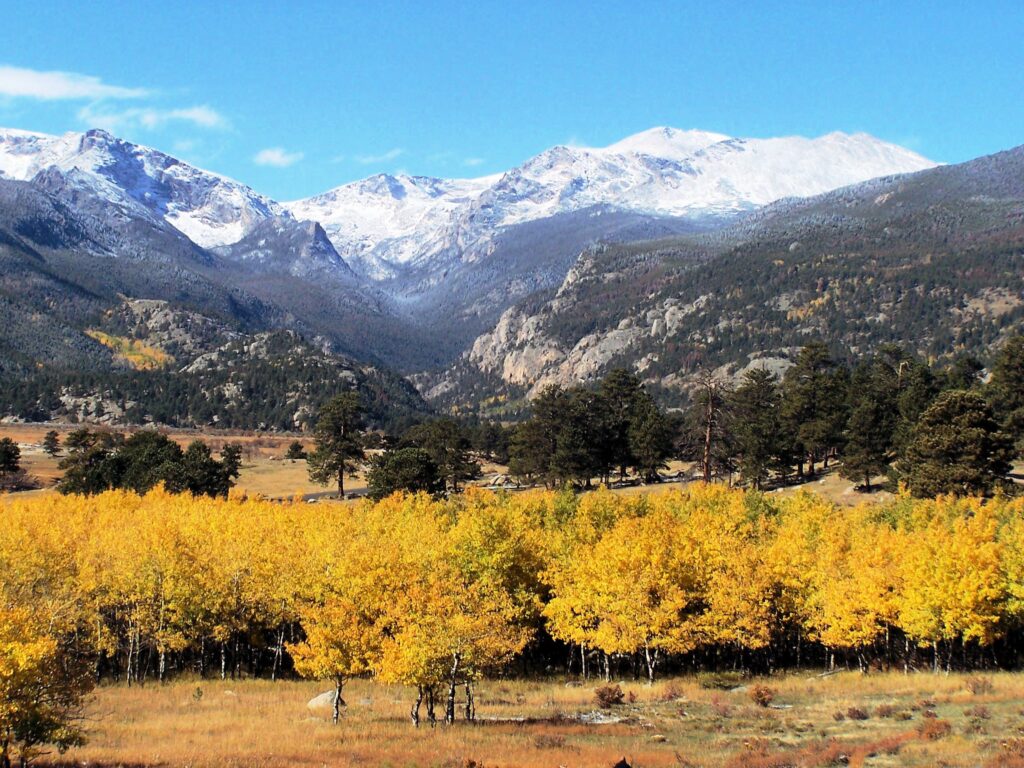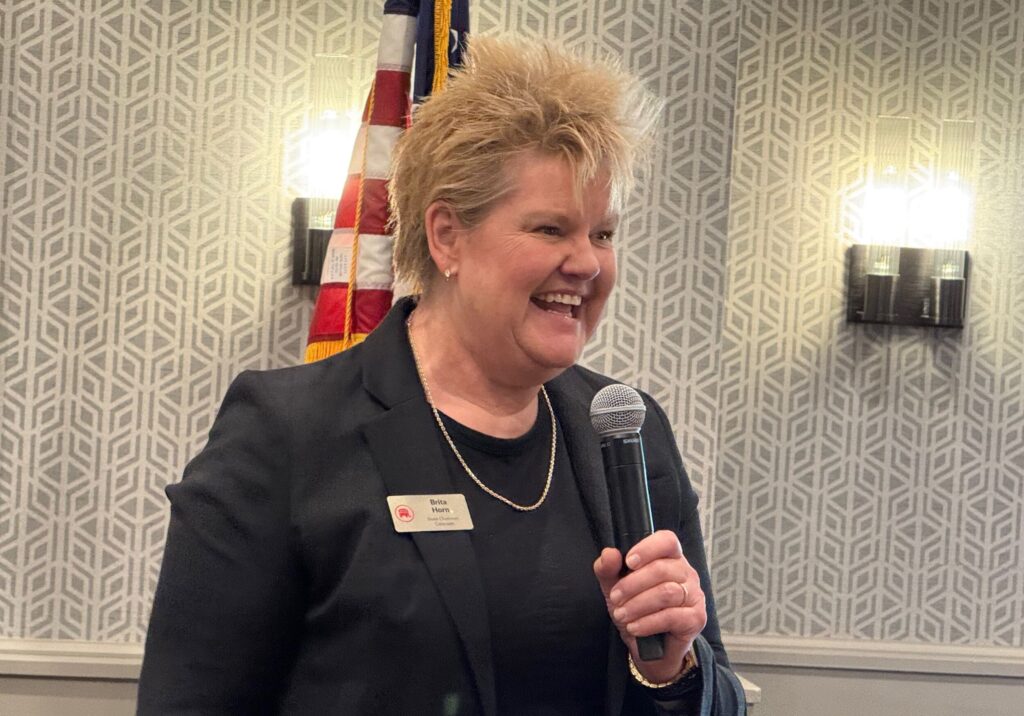Colorado lawmakers kill bill mandating ‘nonlethal’ methods to get compensation for livestock killed by wolves
A panel of legislators struck down a bill that would have required livestock owners to use “nonlethal” deterrent tactics in order to get compensated for livestock killed by gray wolves.
The House Agriculture, Water and Natural Resources Committee decided the bill conflicted with stakeholder decisions following the 2020 passage of a ballot measure that reintroduced gray wolves to Colorado.
According to that ballot measure, ranchers, farmers, and other livestock owners would be reimbursed by the Colorado Parks and Wildlife Commission for any animals killed by the wolves. House Bill 1375 would have mandated the use of “nonlethal coexistence” measures — such as livestock guardian animals, range riders, and protective fencing — as a prerequisite for compensation.
The bill also would have required the Colorado Parks and Wildlife Commission to develop a “conflict prevention” plan, while officials known as “native carnivore coexistence” officers would have been responsible for educating and training livestock owners on the effective implementation of “nonlethal coexistence” strategies.
In addition, the bill would have mandated that livestock owners properly dispose of any animal carcasses found on their property during lambing or calving season within 36 hours of discovery to qualify for the reimbursement.
Supporters maintained that the legislation is based on research, saying nonlethal “coexistence” strategies help livestock owners and that “nonlethal” methods as a deterrent work. Critics said the measure would create distrust and unrealistic expectations, and “coexistence strategies” don’t always work, not to mention the bill disregards “hard-fought consensus.”
Others who voted the bill down expressed worries about making such a big change so soon after the wolves’ reintroduction in Colorado.
The measure adopted several definitions that assumed the philosophical worldview of advocates of wolf reintroduction, such as by defining “native carnivore” to mean any “apex predator” and by calling one section “native carnivore coexistence with humans.”
Bill sponsor Rep. Tammy Story, D-Conifer, said that, while it may seem counterintuitive, studies have indicated that the adoption of nonlethal “coexistence” strategies helps livestock owners. She said wolf depredation constitutes less than 1% of all livestock deaths in the United States, and that livestock are more likely to die from other factors, such as lightning, disease, falls, birthing problems and illness.
Story also emphasized supporters’ rationale for reintroducing wolves to the state. Their numbers are rapidly decreasing, and a population that was once estimated at roughly two million in the United States has dwindled to 5,000 to 8,000, she said.
Gray wolves are a “keystone” species — meaning they have a disproportionately large impact on their environment, Story said.
Maintaining a stable population numbers is crucial for safeguarding the entire ecosystem, as it affects not only the wolves themselves but also the species they prey on.
Story referenced the 1995 reintroduction of gray wolves to Yellowstone National Park, which, she said, resulted in significant plant and tree regrowth. By preying on deer and elk, the wolves compelled these animals to roam more widely across the park, meaning they weren’t grazing in concentrated areas. Although over 250 sheep and 41 cattle were killed by the wolves in Yellowstone between 1995 and 2003, those numbers were far lower than experts had predicted.
And following the reintroduction to Yellowstone, gray wolf populations in Montana, Idaho, and Wyoming have rebounded enough to be removed from the endangered species list, Story said.
“It is time that we set aside fear-based emotion and focus on how we’re going to move forward in this new reality,” she said, referencing the worries voiced by livestock owners about wolves preying on their herds, which has occurred in some areas. “Colorado can be the leader in what successful coexistence between carnivores and livestock producers looks like.”
Don Gittleson, a rancher from Jackson County, spoke of his personal experience with wolves preying on his livestock.
He said six or seven of his cattle have been confirmed as injured or killed by wolves, but he suspects the actual number is higher.
And despite implementing various “nonlethal” strategies recommended by the bill, such as range riders and fox lights, Gittleson said nothing has proven effective enough at keeping the wolves away. He estimated that his ranch has invested as much as $90,000 in “nonlethal coexistence strategies.”
“It is cheaper to lose the animals and not get paid for them than it is to pay for the nonlethal,” he remarked.
Trophic cascade
The dominant view of wolves restoring the pre-extirpation ecosystem arose out of the concept called “trophic cascade,” which occurs, biologists say, when apex predators indirectly benefit plants by changing the abundance of herbivores or their foraging behavior, causing plant biomass, for example, to increase.
The return of wolves to Yellowstone in 1995, this theory goes and as described by Story, triggered such a cascade. That narrative is one of the main arguments put forth by supporters of the 2020 initiative that paved the way for wolf restoration in Colorado.
New research from Colorado State University is challenging that widely accepted narrative that the reintroduction of wolves into Yellowstone National Park in the mid-1990s resulted in restoring the habitat that degraded after the apex predators were removed roughly a century ago.
The CSU researchers, drawing from a 20-year study, concluded the changes that occurred in Yellowstone in the intervening decades — after the absence of wolves, cougars and grizzly bears ultimately led to overgrazing of willows by the elk population — produced a new, stable, elk–grassland ecosystem, but it was not because of the wolves.
Hobbs said contrary to popular opinion, the primary predator between 1990 and 2022 was not wolves, bears, or mountain lions — but humans, who were hunting outside the park’s boundaries. When hunters took a large number of female elk, rather than antlered trophy males, the reproduction rate dropped.
Other researchers offered differing opinions.
In a 2011 paper, William J. Ripple and Robert L. Beschta of the Oregon State University Department of Forest Ecosystems and Society concluded that, in ecosystems where wolves have been displaced or locally extirpated, their “reintroduction may represent a particularly effective approach for passive restoration.”
A ‘communal shield’
Story’s co-sponsor, Rep. Manny Rutinel, D- Commerce City, said the bill’s stipulations incentivize livestock owners to employ “nonlethal coexistence” strategies.
“This communal shield, formed through collective action and supported by our bill, fosters a safer environment for livestock across Colorado, reducing overall incidents of predation and creating a resilient agricultural sector,” he said, citing research claiming that killing wolves actually increases depredation rates.
Also citing research, David Hand, of Fountain, called the bill “a win-win, proactive, preventative, science-driven and responsible bill that sets ranchers up for success.”
“Carnivores are vital to our ecosystem and they help to create more resilient and stable habitats,” Hand said. “This in turn helps prevent environmental catastrophes like fires, floods and droughts.”
Hand said wolves also help cull wild deer and elk populations, such as in the case of Yellowstone, by preying on the old, weak, and sick.
“Predators are very important for ecosystems because they help to keep certain diseases at bay and stabilize populations,” added Alexis Kissinger of Colorado Springs. “We cannot allow our predators to be killed without trying to coexist with them. Coexistence is possible; it always has been, it always will be.”
“It’s not fair to allow compensation without trying to coexist with these animals, especially with how successful nonlethal management was and has been,” Kissinger said.
Nonlethal deterrent strategies work by training predators to stay away from livestock, according to Josh Rosenau of the Mountain Lion Foundation.
Furthermore, he argued, they’re more cost-effective than repeatedly compensating livestock owners when an animal is killed, which Rosenau called a “cycle of conflict.”
‘Distrust and unrealistic expectations’
Opponents of the bill argued that it directly contradicts the standards outlined in the state’s wolf management plan, a product of two years of stakeholder conversations.
According to Tyler Garrett of the Rocky Mountain Farmers Union, the wolf management specifically states that “conflict minimization techniques” are not required for livestock owners to qualify for reimbursement.
“This bill creates a standard that frankly creates distrust and unrealistic expectations after a rancher loses a livestock to a predator,” said Jesse Lasater, a rancher near Durango.
Renee Deal, a sheep producer from the western part of the state, was one of the members of the wolf reintroduction stakeholder advisory group. She said “nonlethal coexistence” strategies were discussed at length during the group’s meetings, but it was ultimately decided that they are too costly and labor-intensive to be considered a reasonable and fair mandate.
Deal noted that even a representative from the conservancy nonprofit Defenders of Wildlife agreed that requiring “nonlethal coexistence” strategies is counterproductive.
“This bill blatantly disregards the hard-fought consensus that culminated in the current regulations, and is frankly a slap in the face,” Deal said.
No livestock owner wants to resort to killing a wolf, she added, and “nonlethal coexistence” strategies are already employed by most farmers and ranchers.
“It’s insulting to assume that we aren’t committed to protecting our animals,” she said.
John Field of the Colorado Woolgrowers Association echoed Deal’s sentiment: “We oppose this bill not because we hate wolves and bears and mountain lions, but because we hate the fact that they depredate on our livestock herds and therefore on our livelihoods.”
Field added that many “nonlethal coexistence” strategies are not always effective, calling carnivore-proof fences “pretty much a fallacy.”
Committee kills bill on 9-4 vote
While committee votes often follow party lines, both Democrats and Republicans voted against HB 1375.
Rep. Meghan Lukens, D-Steamboat Springs, echoed the concerns of some of the bill’s opponents.
“This bill, in my opinion, dismisses the three years of public engagement that went into the recommendations of the wolf working group, the wolf management plan, and the stakeholder advisory group,” she said.
Reps. Matthew Martinez, D- Monte Vista, and Brianna Titone, D- Arvada, expressed reservations about implementing such a significant change when the wolves were only reintroduced to the state less than four months ago. Martinez said he hasn’t heard of any instances in which a wolf has been killed by a livestock owner since the wolves’ reintroduction.
“I would like to see it through at least this year to be able to see where (the wolves) are moving and how they’re interacting, and I don’t know if three months or four months is enough time to really adequately get the data to be able to make a sharp adjustment,” he said.
“Let’s give our ranchers the benefit of the doubt that they do use best practices, and they do appreciate wildlife, and they do want to make a living,” concluded Rep. Barbara McLachlan, D- Durango.
Representatives Mandy Lindsay, D- Aurora, Julia Marvin, D- Thornton, Elizabeth Velasco, D- Glenwood Springs, and Story voted in favor of the bill.













